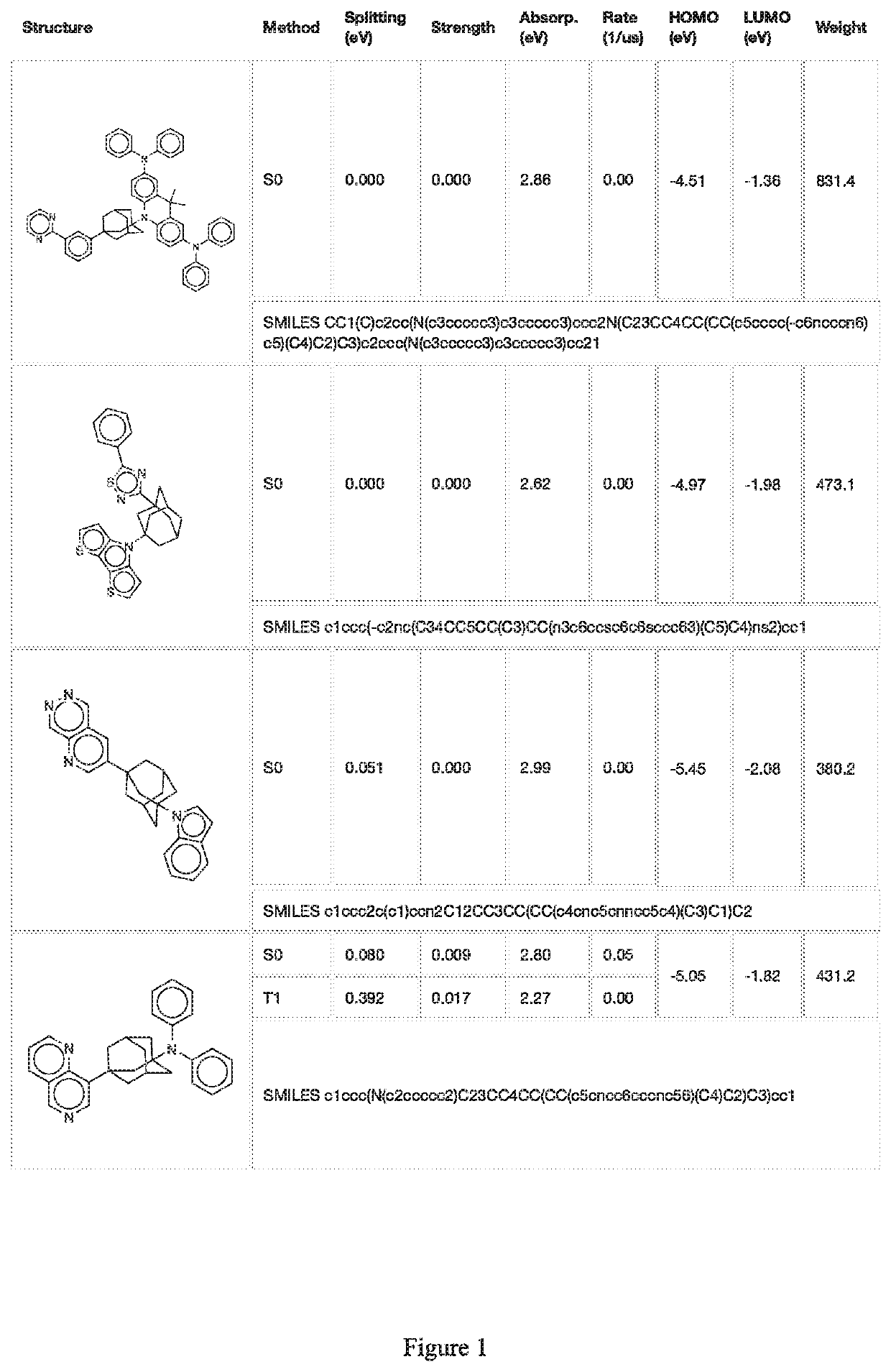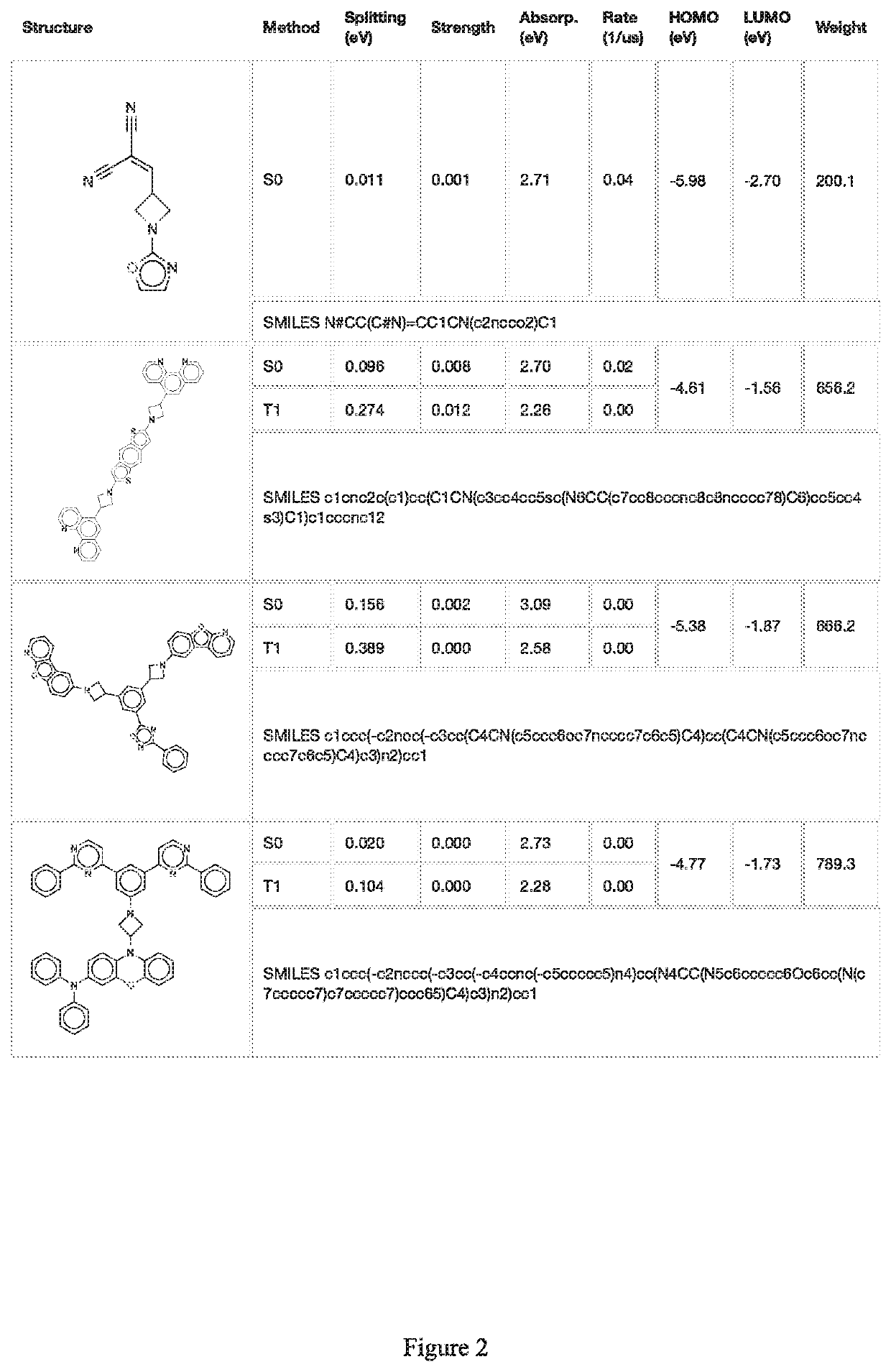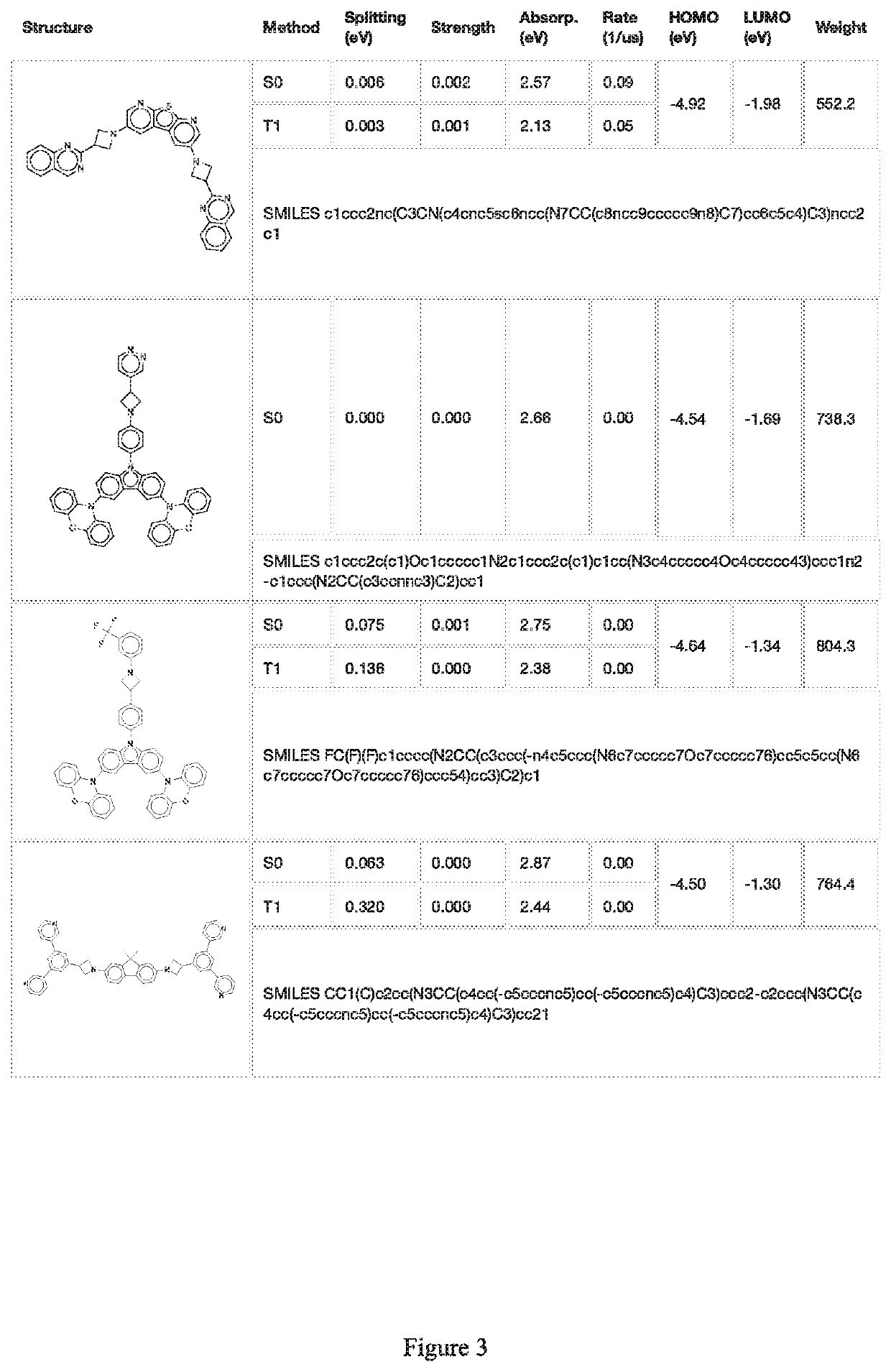Compounds for organic light emitting diode materials
a light-emitting diode and organic technology, applied in the direction of luminescent compositions, organic chemistry, chemistry apparatus and processes, etc., can solve the problems of limited lifetime of organic materials and reached limit to the performance of phosphorescent materials, and achieve rapid degradation, delayed fluorescence, and high excitation states
- Summary
- Abstract
- Description
- Claims
- Application Information
AI Technical Summary
Benefits of technology
Problems solved by technology
Method used
Image
Examples
example 1
Preparation of 10-phenyl-4a′,9a′-dihydro-10H, 10′H-spiro[acridine-9,9′-anthracen]-10′-one
[0169]An exemplary synthesis is represented by the following reaction scheme:
[0170]In this exemplary synthesis, n-BuLi (1.6 M in hexane, 14.6 mL, 23.3 mmol) is added to a solution of of 2-bromotriphenylamine (7.54 g, 23.3 mmol) in dry THF (180 mL) at −78° C. That mixture is stirred for 1.5 hours at −78° C. Anthraquinone (4.3 g, 21.2 mmol) is added to the reaction solution, which is then stirred for 1 day at 0° C. The reaction mixture is extracted into chloroform. The organic layer is dried over MgSO4, filtered, and concentrated in vacuo, then purified by column chromatography. The reaction product (3.21 g, 7.09 mmol), acetic acid (55 mmol), and HCl (5.5 mL) are stirred for 4 hours under reflux. The reaction mixture is filtered, and the product is extracted into chloroform. The organic layer is dried over MgSO4, filtered, and concentrated in vacuo, then purified by column chromatography.
example 2
Preparation of 3-(1,6-naphthyridin-8-yl)-N,N-diphenyladamantan-1-amine
[0171]3-(1,6-naphthyridin-8-yl)-N,N-diphenyladamantan-1-amine may be prepared by a person of ordinary skill by the following scheme:
See Chem. Commun. (Cambridge), 47 4778-4780; J. Org. Chem., 64 (16), 6019-6022. The starting materials may be purchased, for example, from Sigma Aldrich, Ark Pharm, Alfa Aesar, or eMolecules.
example 3
Preparation of 5-((4R,5R)-5-(4-(9H-pyrido[3,4-b]indol-9-yl)phenyl)-2,2-dimethyl-1,3-dioxolan -4-yl)isophthalonitrile
[0172]5-((4R,5R)-5-(4-(9H-pyrido[3,4-b]indol-9-yl)phenyl)-2,2-dimethyl-1,3-dioxolan-4-yl)isophthalonitrile may be prepared by a person of ordinary skill by the following scheme:
See Tetrahedron Lett., 45 (42), 7873-7877; Synthesis, (20), 3493-3503; Angew. Chem, Int. Ed., 51 (38),9581-9586; Synthesis, (10), 1263-1266; Angew. Chem., Int. Ed., 53 (13), 3505-3509. The starting materials may be purchased, for example, from Sigma Aldrich, Alfa Aesar, or eMolecules.
PUM
| Property | Measurement | Unit |
|---|---|---|
| electric current | aaaaa | aaaaa |
| lifetime | aaaaa | aaaaa |
| energy | aaaaa | aaaaa |
Abstract
Description
Claims
Application Information
 Login to View More
Login to View More - R&D
- Intellectual Property
- Life Sciences
- Materials
- Tech Scout
- Unparalleled Data Quality
- Higher Quality Content
- 60% Fewer Hallucinations
Browse by: Latest US Patents, China's latest patents, Technical Efficacy Thesaurus, Application Domain, Technology Topic, Popular Technical Reports.
© 2025 PatSnap. All rights reserved.Legal|Privacy policy|Modern Slavery Act Transparency Statement|Sitemap|About US| Contact US: help@patsnap.com



